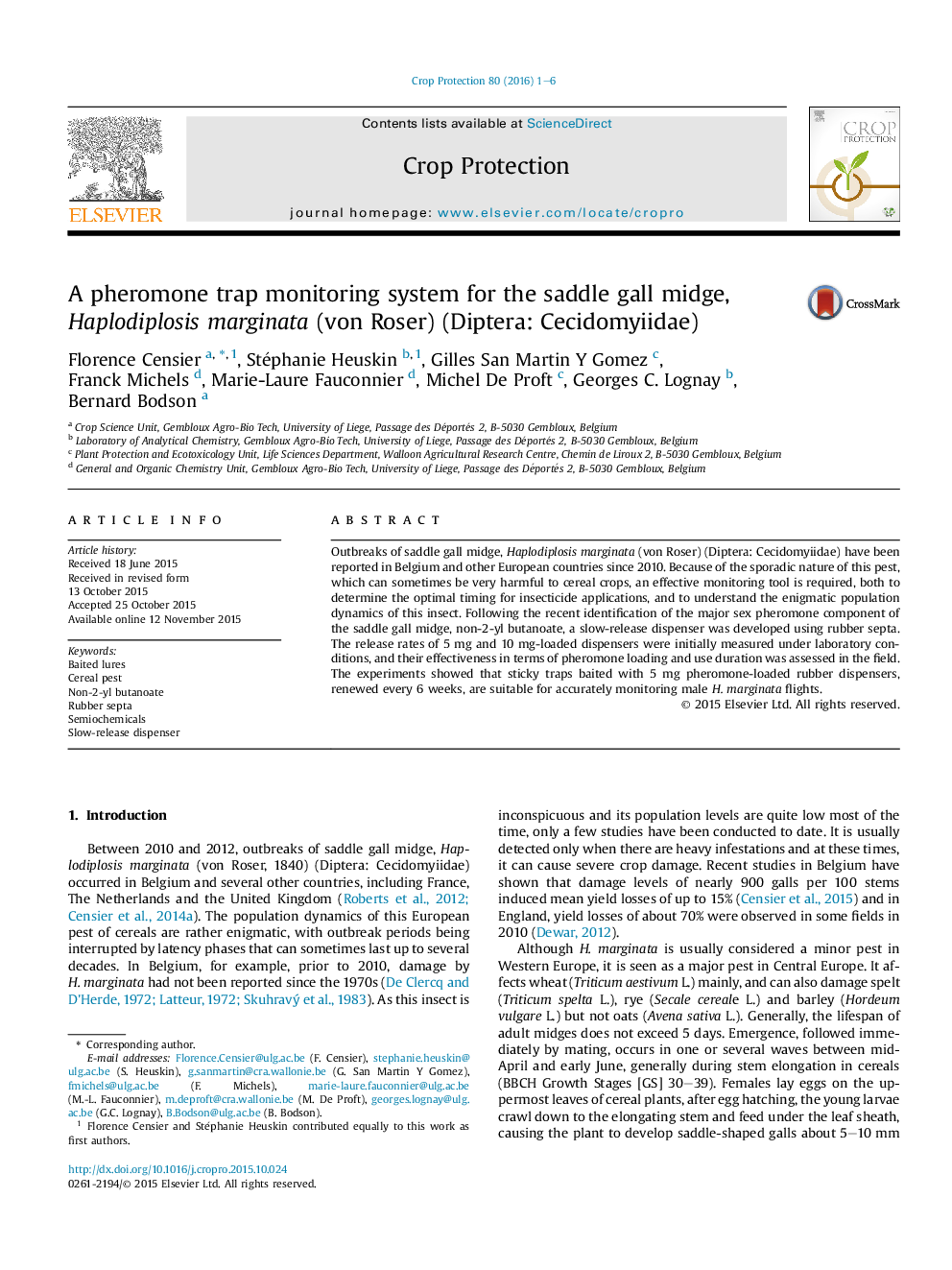| Article ID | Journal | Published Year | Pages | File Type |
|---|---|---|---|---|
| 4505564 | Crop Protection | 2016 | 6 Pages |
•A slow-release dispenser for Haplodiplosis marginata, using rubber septa, was developed.•Dispensers were loaded with 5 mg or 10 mg of non-2-yl butanoate.•Dispenser release rates were initially measured under laboratory conditions.•Pheromone loadings and use durations of the dispensers were assessed in the field.•Specifically baited traps attracted large numbers of H. marginata males in the field.
Outbreaks of saddle gall midge, Haplodiplosis marginata (von Roser) (Diptera: Cecidomyiidae) have been reported in Belgium and other European countries since 2010. Because of the sporadic nature of this pest, which can sometimes be very harmful to cereal crops, an effective monitoring tool is required, both to determine the optimal timing for insecticide applications, and to understand the enigmatic population dynamics of this insect. Following the recent identification of the major sex pheromone component of the saddle gall midge, non-2-yl butanoate, a slow-release dispenser was developed using rubber septa. The release rates of 5 mg and 10 mg-loaded dispensers were initially measured under laboratory conditions, and their effectiveness in terms of pheromone loading and use duration was assessed in the field. The experiments showed that sticky traps baited with 5 mg pheromone-loaded rubber dispensers, renewed every 6 weeks, are suitable for accurately monitoring male H. marginata flights.
